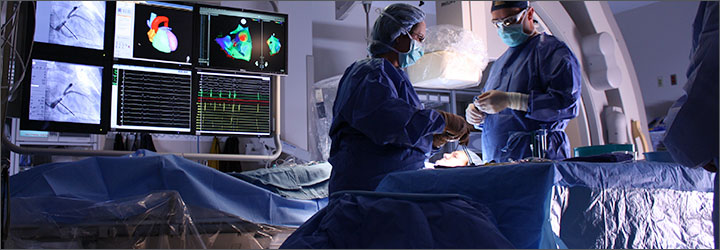Optical surgical navigation has transformed the field of surgery, providing cost-effective, accurate and useful tools for surgeons. This new technology has had several significant benefits for clinical planning and surgical performance, enabling clinicians to perform more complex procedures with greater efficiency and safety.
To plan a successful surgery, surgeons need a detailed knowledge of the patient’s anatomy. Optical surgical navigation offers great accuracy by providing a real-time view of the patient’s internal anatomy. This article will examine closely the impact of optical surgical navigation on clinical planning and surgical performance, addressing the challenges and advantages that the new technology offers.
How does optical surgical navigation benefit surgery planning?
Optical surgical navigation tests the tissue with a light wave impedance calculation, which produces a sensitive diagnostic signal detected by a transducer. This information is transferred directly to a computer, which compares the preoperative image with the actual, up-to-date image during surgery. This information is useful for previewing any changes in the patient’s anatomy, allowing the surgeon to do more detailed surgical planning with a higher degree of accuracy and safety.
In addition, information gathered through optical surgical navigation provides greater accuracy during instrument insertion, improving the accuracy of the surgery itself. As a result, optical surgical navigation significantly reduces the time of surgery, improves the outcome of surgery, and reduces recovery time for the patient.
Another important benefit of optical surgical navigation is the reduction of collateral damage, such as muscle, tendon, nerve or bone injuries. This reduces the risks of unknown injuries during surgery, which would normally require additional time in the operating room. Optical surgical navigation also benefits surgical accuracy by allowing instruments to be precisely placed in a given area to minimize tissue trauma and the risk of hemorrhage.
How does surgical navigation help procedures during surgery?
Optical surgical navigation helps improve surgical performance. This is because surgeons can use this technology to see the patient’s organs during the operation without having to remove a huge amount of tissue. This reduces the operation time and reduces damage to surrounding tissues, which improves the long-term success of the procedure. This technology also improves the information collected during surgery, allowing surgeons to monitor and control the results of surgery accurately and safely.
Optical surgical navigation also helps with useful tools to improve postoperative evaluation. This technology allows surgeons to examine the image of the abdominal cavity in real time, allowing them to make corrections or adjustments necessary to avoid further complications. This helps reduce the time people spend in the intensive care unit after surgery.
What are the benefits for the patient of optical surgical navigation?
Optical surgical navigation also helps increase patient satisfaction. This technology has allowed surgeons to perform more complex procedures with fewer complications, often with better results than those operated with conventional surgical techniques. Optical surgical navigation has minimized recovery time, decreased pain, and relieved anxiety and fears related to complex procedures. This has led to better overall patient satisfaction, contributing to better long-term clinical outcomes.
In short, it is clear that optical surgical navigation has transformed the field of modern surgery. This technology has significantly improved clinical planning, surgical performance and patient satisfaction. Optical surgical navigation offers a wide variety of advantages, which has allowed surgeons to perform procedures with greater efficiency, accuracy and safety.
Kalstein instruments at the service of optical surgical navigation
The technology developed by Kalstein, as a manufacturer of state-of-the-art medical equipment, makes available to surgeons optical surgical navigators that can be used in different procedures in patients. These devices can incorporate a navigation probe, various screens to display the target tissues and with a resolution that guarantees the accuracy of the procedure. There are other details that may be of interest on the pages HERE and HERE, where you can also manage purchases, prices and other requests.

